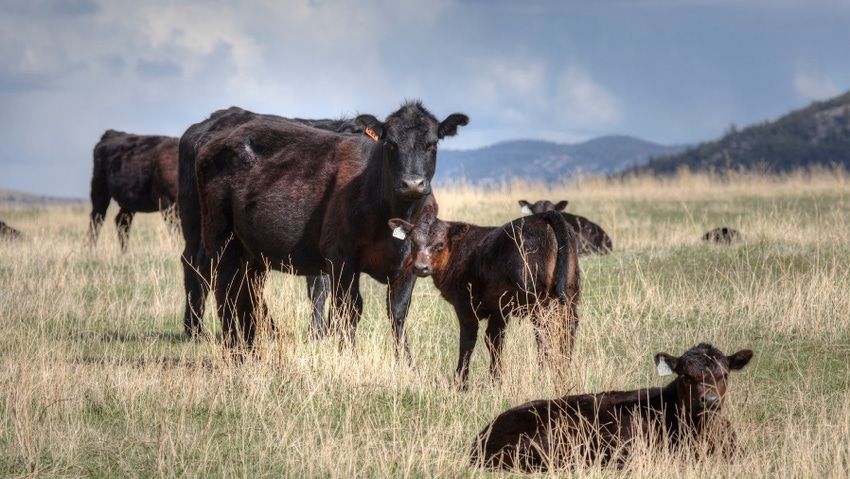The importance of vitamin A for calf health
Vitamin A deficiency can have many symptoms in young calves. They can range from weakness to a dampened immune system.
March 13, 2024

By Emma Reints, Iowa State University
Vitamin A is critical in reproduction, growth, and health in cattle. Though green grass is rich in the precursor to vitamin A, beta carotene, deficiency in vitamin A may be of concern due to recent years of drought. National recommendations for vitamin A supplementation assume cows have been eating lots of green grass for a significant portion of the year, building stores for critical processes such as vision, helping cows stay healthy while pregnant, and general cattle health. It is essential to monitor for signs of vitamin A deficiency as it can be a major factor in the success of your calf crop this year.
Young calves with vitamin A deficiency may display signs ranging from weakness to a dampened immune system, leading to increased susceptibility to disease (especially diarrhea.) Vitamin A is important in epithelial cells, such as those in the eye and those lining the gut. Some signs to look for are:
Increased illness, including diarrhea and pneumonia
Reduced feed intake and growth
Rough hair coat
Weak and uncoordinated
In extreme deficiency, a white film over the eye (xerophthalmia)
Access to colostrum is one of the most important parts of establishing vitamin A status in newborn calves. Did you know newborn calves have virtually no vitamin A in their body? Vitamin A cannot transfer to the calf in utero, but colostrum is rich in vitamin A and will establish vitamin A stores in newborn calves. Vitamin A stores begin to be moved for colostrum production before calving, so it is important to consider vitamin A supplementation in your cows during late gestation. Stored feedstuffs, like cornstalks and hay, are likely low in vitamin A, so they should be supplemented with vitamin A to ensure calves obtain adequate vitamin A in the colostrum and milk.
Given the persistent drought in Iowa, current recommendations for vitamin A are likely low and producers may want to target rates closer to 75,000 IU/d if you think your cows have good stores of vitamin A, or 90,000 IU/d if cows have been fed stored forages and came off droughty pastures last fall (Mary Drewnoski, UNL, personal communication.) Remember, vitamin A easily degrades over time, so feeding an old supplement will not provide the vitamin A on the label, and may not be enough to support cow and calf health.
In the unfortunate event that calves are stillborn or die, a diagnostic test should be run to understand if vitamin A deficiency is a concern. Also, producers should inform the lab if the calf had colostrum so the appropriate reference ranges can be used in diagnosis.
If a vitamin A deficiency is diagnosed, injectable vitamin A may be an option to increase vitamin A status rapidly. Injections will not be a long-term fix, and underlying reasons for deficiency should be fixed to maintain vitamin A status.
You May Also Like


.png?width=300&auto=webp&quality=80&disable=upscale)
